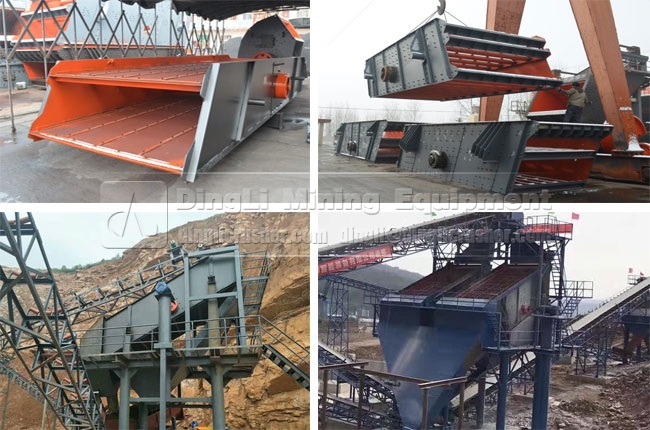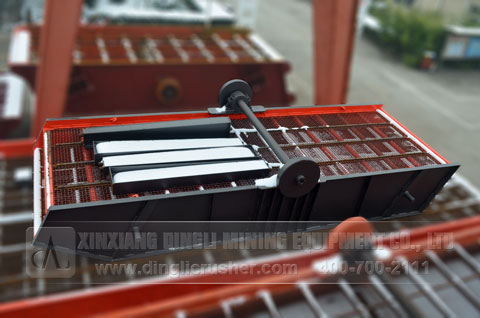Four Tips for Improving Efficiency of Vibrating Screen
The mining vibrating screen is commonly applied for separation of aggregate materials. In most stone crushing lines, the screening process occurs after the bulk stone has been processed by a primary crusher. The role of vibrating screen in the processing flow is to separate and classify the materials ahead of secondary and tertiary crushing circuits, and/or for final product stockpiling. It is the basic principle in the stone crusher plant that crusher produces the material; screens separate the material and the screening efficiency directly affects the overall performance of the production line.
Screening is both art and science. The art lies in constant meticulous fine tuning, tweaking and synchronizing of screen setups within long-period applications. Its science is gradation. In other words, the vibration of the screen deck agitates the material causing it to stratify, allowing the larger particles to remain on the top deck and the smaller particles to fall through the openings of the screening surface. Screening efficiency is calculated as the percentage of the undersize materials passing through the openings divided by the percentage of undersize in the feed. For example, if a screen is only 75 percent efficient, then 25 percent of the material within the desired product range is being rejected with the oversize material.

Vibrating screen must be properly selected and designed, or it will cause potential consequences within an operation. Nowadays larger screens are favored by the customers for its larger capacity. While most producers want more tons per hour across the screen, the key to optimum screening is maximizing capacity without losing efficiency. This may involve a good amount of trial and error, as there are many operating parameters to consider.
Four Solutions for Improving the Vibrating Efficiency
1. Properly speed up the speed. Greater speed may decrease depth of bed, but also increases the G-force, which decreases bearing life. Using the proper opening size for the desired particle separation, along with increased speed, will leave a minimal percentage of desired product size in the oversize. Alternatively, combining increased speed with a slightly larger opening size may allow a percentage of oversize in the desired product specification.

2. Increasing stroke delivers a higher carrying capacity and travel rate, while reducing plugging and enhancing stratification. However, it can create some inefficiency when lightly loaded decks lead to material bouncing. Generally, coarse separation requires increased stroke and less speed, while fines separation needs less stroke and higher speed.
3. Rotation direction can dramatically impact incline screen performance. Running counter flow, or uphill may increase material retention time and action on the screen. This potentially gives the particles more opportunity to find an opening and ultimately increases efficiency. Direction of rotation has little effect on a linear-type horizontal screen.
4. Increasing the angle of inclination causes faster material travel, which can be advantageous in certain dry screening applications. Although, there may be a point where too much incline will hinder efficiency as fines may roll over the media rather than pass through. Consider adjusting both linear and triple-shaft horizontal screens for inclination as well. One can realize some gain in capacity, rate of travel and productivity by adding some incline to the horizontal screen.
More
- 8 Tips to Improve Efficiency and Effect of Vibrating Screen
- Mining Vibrating Screen Type Parameter and Company
- Vibrating Screen Maintenance and Reasons of Clogging
- How to Select Suitable Vibration Screen among Mining Market?
- Four Tips for Improving Efficiency of Vibrating Screen
- Analysis on Stone Plant Vibrating Screen Maker Spare Parts
- Vibrating Feeder Application Field and Working Principle
NextContent:None







